The Vermont Statutes Online
The Statutes below include the actions of the 2025 session of the General Assembly.
NOTE: The Vermont Statutes Online is an unofficial copy of the Vermont Statutes Annotated that is provided as a convenience.
Title 10 : Conservation and Development
Chapter 047 : Water Pollution Control
Subchapter 003A : CONCENTRATED ANIMAL FEEDING OPERATIONS
(Cite as: 10 V.S.A. § 1351)-
§ 1351. Definitions
As used in this subchapter:
(1) “Agricultural waste” means material originating or emanating from a farm or imported onto a farm that contains sediments; minerals, including heavy metals; plant nutrients; pesticides; organic wastes, including livestock waste; animal mortalities; compost; feed, litter, and crop debris; waste oils; pathogenic bacteria and viruses; thermal pollution; silage runoff; process wastewater; untreated milk house waste; and any other farm waste as the term “waste” is defined in subdivision 1251(12) of this chapter.
(2)(A) “Animal feeding operation” or “AFO” means a lot or facility, other than an aquatic animal production facility, where the following conditions are met:
(i) animals, other than aquatic animals, have been, are, or will be stabled or confined and fed or maintained for a total of 45 days or more in any 12-month period; and
(ii) crops, vegetation, or forage growth are not sustained in the normal growing season over any portion of the lot or facility.
(B) Two or more individual farms qualifying as an AFO that are under common ownership and that adjoin each other or use a common area or system for the disposal of waste shall be considered to be a single AFO if the combined number of livestock or domestic fowl on the combined farm qualifies the combined farm as a large CAFO as defined in subdivision (5) of this section or as a medium CAFO as defined in subdivision (8) of this section.
(3) “Concentrated animal feeding operation” or “CAFO” means an AFO that is defined as a large CAFO, a medium CAFO, or a small CAFO.
(4) “Land application area” means the area under the control of an AFO or CAFO owner or operator, whether it is owned, rented, or leased, to which manure, litter, or process wastewater may be applied.
(5) “Large concentrated animal feeding operation” or “Large CAFO” means an AFO that houses 700 or more mature dairy animals, 1,000 or more cattle or cow or calf pairs, 1,000 or more veal calves, 2,500 or more swine weighing over 55 pounds, 10,000 or more swine weighing 55 pounds or less, 500 or more horses, 10,000 or more sheep or lambs, 55,000 or more turkeys, 30,000 or more laying hens or broilers with a liquid manure handling system, 82,000 or more laying hens without a liquid manure handling system, 125,000 or more chickens other than laying hens without a liquid manure handling system, 5,000 or more ducks with a liquid manure handling system, or 30,000 or more ducks without a liquid manure handling system.
(6) “Large farm operation” or “LFO” has the same meaning as in 6 V.S.A. chapter 215.
(7) “Manure” means livestock waste in solid or liquid form that may also contain bedding, compost, and raw materials or other materials commingled with manure or set aside for disposal.
(8) “Medium concentrated animal feeding operation” or “medium CAFO” means an AFO that is defined as an AFO by the VPDES CAFO Rules adopted by the Secretary, including an AFO that:
(A) houses 200 to 699 mature dairy animals, 300 to 999 cattle or cow or calf pairs, 300 to 999 veal calves, 750 to 2,499 swine weighing over 55 pounds, 3,000 to 9,999 swine weighing 55 pounds or less, 150 to 499 horses, 3,000 to 9,999 sheep or lambs, 16,500 to 54,999 turkeys, 9,000 to 29,999 laying hens or broilers with a liquid manure handling system, 25,000 to 81,999 laying hens without a liquid manure handling system, 37,500 to 124,999 chickens other than laying hens without a liquid manure handling system, 1,500 to 4,999 ducks with a liquid manure handling system, or 10,000 to 29,999 ducks without a liquid manure handling system; and
(B) either of the following conditions are met:
(i) wastes are discharged into waters through a man-made ditch, flushing system, or other similar man-made device; or
(ii) wastes are discharged directly into waters that originate outside of or pass over, across, or through the facility or otherwise come into direct contact with the animals confined in the operation.
(9) “Medium farm operation” or “MFO” has the same meaning as medium farm operation in 6 V.S.A chapter 215 and rules adopted under the chapter.
(10) “Point source” means any discernible, confined, and discrete conveyance, including any pipe, ditch, channel, tunnel, conduit, well, discrete fissure, container, rolling stock, concentrated animal feeding operation, or vessel or other floating craft from which pollutants are or may be discharged. This term does not include agricultural stormwater discharges and return flows from irrigated agriculture.
(11) “Process wastewater” means water directly or indirectly used in the operation of an AFO or CAFO for any or all of the following: spillage or overflow from animal or poultry watering systems; washing, cleaning, or flushing pens, barns, manure pits, or other AFO or CAFO facilities; direct contact swimming, washing, or spray cooling of animals; or dust control. Process wastewater also includes any water that comes into contact with any raw materials, products, or byproducts, including manure, litter, feed, milk, eggs, or bedding.
(12) “Production area” means that part of an AFO or CAFO that includes the animal confinement area, the manure storage area, the raw materials storage area, and the waste containment areas. The animal confinement area includes open lots, housed lots, feedlots, confinement houses, stall barns, free stall barns, milkrooms, milking centers, cowyards, barnyards, medication pens, walkers, animal walkways, and stables. The manure storage area includes lagoons, runoff ponds, storage sheds, stockpiles, under house or pit storages, liquid impoundments, static piles, and composting piles. The raw materials storage area includes feed silos, silage bunkers, and bedding materials. The waste containment area includes settling basins, and areas within berms and diversions that separate uncontaminated storm water. Also included in the definition of production area is any egg washing or egg processing facility and any area used in the storage, handling, treatment, or disposal of mortalities.
(13) “Secretary” means the Secretary of Natural Resources.
(14) “Small animal feeding operation” or “SFO” means an AFO that is not a large CAFO or a medium CAFO.
(15) “Small concentrated animal feeding operation” or “small CAFO” means a small AFO designated as a small CAFO by the Secretary upon determining that the AFO is a significant contributor of pollutants to waters of the State and is defined as a CAFO by the regulations adopted under the federal Clean Water Act.
(16) “Waters of the United States” shall have the same meaning as defined by the federal Clean Water Act. (Added 2025, No. 67, § 8, eff. July 1, 2025.)

